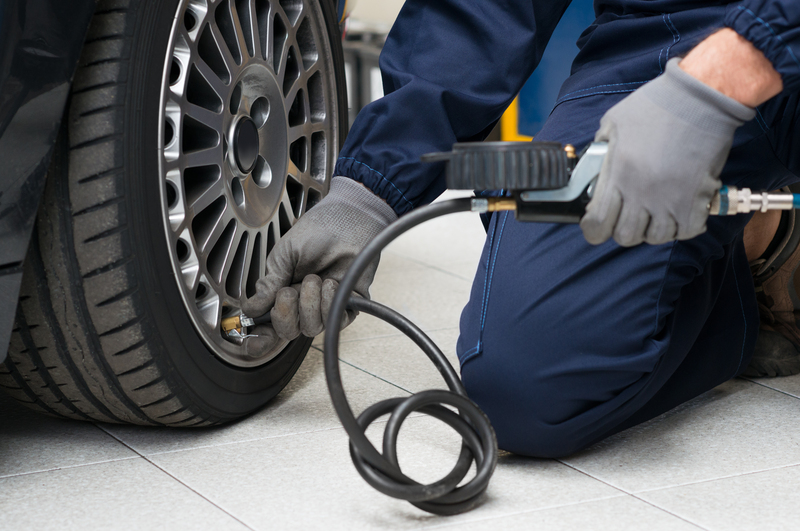How to Disassemble and Move Your Bed and Mattress Efficiently
Moving houses can be an overwhelming process, especially when it comes to larger, bulkier furniture items. Disassembling and moving your bed and mattress efficiently is crucial not only to save time but also to protect your belongings and avoid unnecessary damage. In this comprehensive guide, we will walk you through the step-by-step process, ensuring a smooth transition from one place to another. Whether you have a platform bed, a metal frame, or a king-size mattress, these actionable tips will help make the bed and mattress moving process stress-free and safe.
Why Properly Disassembling and Moving Your Bed and Mattress Matters
Taking the time to properly disassemble and move your bed and mattress isn't just about convenience. It is about:
- Protecting your investment: Beds and mattresses are often significant purchases.
- Reducing risk of damage: Proper handling minimizes scratches, dents, and tears.
- Maximizing space: A disassembled bed frame takes up much less space in the moving truck.
- Preventing personal injury: Large, awkward furniture is a primary cause of moving-related accidents.
By following the right method for disassembling and transporting beds and mattresses, you can avoid common pitfalls and enjoy a smoother relocation experience.

Essential Tools and Supplies for Disassembling Beds and Mattresses
Before you begin the bed disassembly process, make sure you have these essential tools and supplies:
- Phillips and flathead screwdrivers
- Allen wrenches or hex keys
- Pliers (for tricky bolts and hardware)
- Adjustable wrench or socket set
- Hammer or rubber mallet (for stubborn joints)
- Plastic bags or small containers for screws and bolts
- Marker and masking tape for labeling
- Moving blankets or old sheets
- Straps or ropes
- Mattress bag or cover for protection
Pro Tip: Take photographs of your bed frame as you disassemble it. This simple step can save you frustration during reassembly at your new home.
Step-by-Step Guide to Disassembling Your Bed Frame
1. Clear and Prepare the Area
Remove all bedding, pillows, and blankets from your bed. Strip the mattress of sheets and covers, giving yourself room to work. Move any nightstands or lamps out of the way.
2. Remove the Mattress and Box Spring
- Carefully lift your mattress off the frame with the help of a friend.
- Place it in a mattress bag or wrap it with plastic to protect it from dirt and moisture during the move.
- If you have a box spring or foundation, remove it next and wrap it similarly.
3. Identify Your Bed Frame Type
Beds come in various designs. Understanding your specific model will speed up the process and prevent mistakes. Common types include:
- Platform beds
- Metal frames
- Wooden frames
- Adjustable beds
- Sleigh beds
Check the manufacturer's guide or look for online instructions if you are unsure.
4. Take Out Slats or Support Boards
- Many frames have slats or boards that support the mattress.
- Lift out each slat and set it aside. Label or photograph as needed for easy reassembly.
5. Loosen and Remove Bolts, Screws, or Fasteners
- Use the appropriate tool (screwdriver, wrench, Allen key) on each joint.
- Carefully unscrew bolts and keep them safe in labeled bags or containers. Tape the bag to a piece of the bed if desired.
Tip: Take your time and avoid stripping any screws or overtightening tools. If anything is stuck, use penetrating oil or ask for help.
6. Disassemble the Headboard and Footboard
- With fasteners removed, gently separate the headboard and footboard from the bed rails or frame.
- Protect painted or delicate surfaces with moving blankets.
- Wrap up the hardware with the boards or label them clearly.
7. Separate and Bundle Side Rails and Main Frame Pieces
- Detach side rails or main crossbars.
- Bundle similar pieces together and secure with tape or straps.
8. Double-Check for Loose Parts
Walk around the disassembled frame and check for small components, leftover screws, or washers. Gather and bag all spare parts.
Now your bed frame is fully disassembled and ready to be moved safely!
Packing and Protecting Your Bed and Mattress for the Move
Keep Everything Organized
- Label all your hardware bags. Use clear descriptions: "headboard bolts" or "rail screws."
- Store every bag with its corresponding part or keep a dedicated box just for bed assembly hardware.
Protecting Wood, Metal, and Upholstered Pieces
- Wrap wood and metal frames with moving blankets, bubble wrap, or old towels.
- For upholstered bed frames, add an extra protective layer to prevent fabric snags or discoloration.
- Secure all padding with tape--avoid placing tape directly on finished surfaces.
- Place labeled hardware bags inside the headboard wrap or tape directly to safer areas of the frame.
Transporting Your Mattress Safely
- Use a mattress bag to keep out dust and moisture.
- Keep the mattress flat if possible to avoid sagging or internal damage.
- If standing the mattress upright is necessary for space, make sure it is securely strapped to prevent tipping or bending.
- Never place heavy objects on top of the mattress.
Loading the Bed and Mattress into the Truck
- Load mattresses and box springs vertically along the side walls of your truck for maximum space utilization.
- Secure the mattress using moving straps or rope.
- Stack disassembled bed frame components together for easy access and efficient unloading.
- Keep essential assembly hardware handy; don't pack it at the bottom of a box.
Special Tips for Moving King, Queen, and Adjustable Beds
Moving a King or Queen Size Bed Frame
- King and Queen frames often have central support legs in addition to side rails: remove and pack these legs separately.
- Large headboards or footboards may be too big for narrow hallways, so measure and plan your pathway in advance.
- Pay special attention to decorative trims and delicate surfaces. Wrap these areas generously to prevent dents or scratches.
- Heavy bed components may require two or more people to carry safely.
Transporting an Adjustable Bed Base
- Unplug all power cords and remove batteries from remotes before moving.
- Detach the mattress from the adjustable base.
- Follow the manufacturer's instructions for disassembly.
- Wrap the electronic base in moving blankets and use caution, as these frames have moving parts and sensitive electronics.
How to Move a Bed and Mattress Through Tight Spaces
Doorways, staircases, and elevators can present major challenges. Follow these strategies:
- Measure every opening before moving. Compare your frame and mattress dimensions to ensure a fit.
- Disassemble as much as possible; don't leave larger components attached unnecessarily.
- Use sliding pads or furniture glides if you must drag components over the floor--this prevents damage to both the furniture and flooring.
- Angle long rails vertically when going around corners, or get someone to guide from both ends.
Reassembling Your Bed and Mattress at the New Location
Organize All Parts Before You Begin
- Lay out all frame pieces and hardware.
- Consult your labeled bags or container of screws, bolts, and fasteners.
- Review your photos or instructions from disassembly.
Reassemble the Frame Step by Step
- Begin with the main structure: attach side rails to the headboard first, then to the footboard.
- Refit support slats or center rails according to your reference photos.
- Install any support legs or brackets.
- Tighten all fasteners securely but avoid overtightening (which can damage wood or strip screw holes).
Replace the Mattress, Box Spring, and Bedding
- Remove your mattress from its moving bag and allow it time to air out and return to normal shape.
- Place the box spring (if you have one) and then the mattress onto the fully assembled frame.
- Make your bed with clean linens for a fresh start in your new home!

Frequently Asked Questions: Disassembling and Moving Your Bed and Mattress
Can I move my bed without taking it apart?
Most beds are simply too large to move intact, especially up or down stairs. Disassembling bed frames significantly reduces the risk of damage to walls, doorways, and the bed itself.
How do I keep my mattress clean during a move?
Always use a mattress bag or heavy-duty plastic wrap. This protects against dirt, moisture, and pests during the moving process.
What if I lose some hardware?
Most hardware shops carry replacement fasteners. Always photograph or note the size and type before your move just in case. Some furniture brands also offer replacement parts.
Can I store my mattress upright after moving?
Short-term storage is fine, but for long-term storage, always store the mattress flat to retain its shape and comfort.
Should I hire professionals?
If your bed is especially large, heavy, or complex (e.g., a canopy bed or adjustable base), professional movers can make the process much easier and safer.
Final Tips for Efficiently Disassembling and Moving Beds and Mattresses
- Give yourself plenty of time. Rushing leads to mistakes and possible damage.
- Work with a partner for heavy lifting. Never move a mattress or large bed frame alone.
- Take lots of photos during disassembly--you'll thank yourself later.
- Keep all hardware and assembly instructions in a clearly labeled box or bag.
- Don't skip mattress protection! Stains, rips, and pests can be prevented with a simple mattress bag.
Disassembling and moving your bed and mattress efficiently doesn't have to be stressful. With the right tools, a good plan, and some organization, you'll protect your valuable furniture and make reassembly quick and easy. Now you're ready to enjoy your bed in your new home--rest easy knowing you handled every step like a pro!



